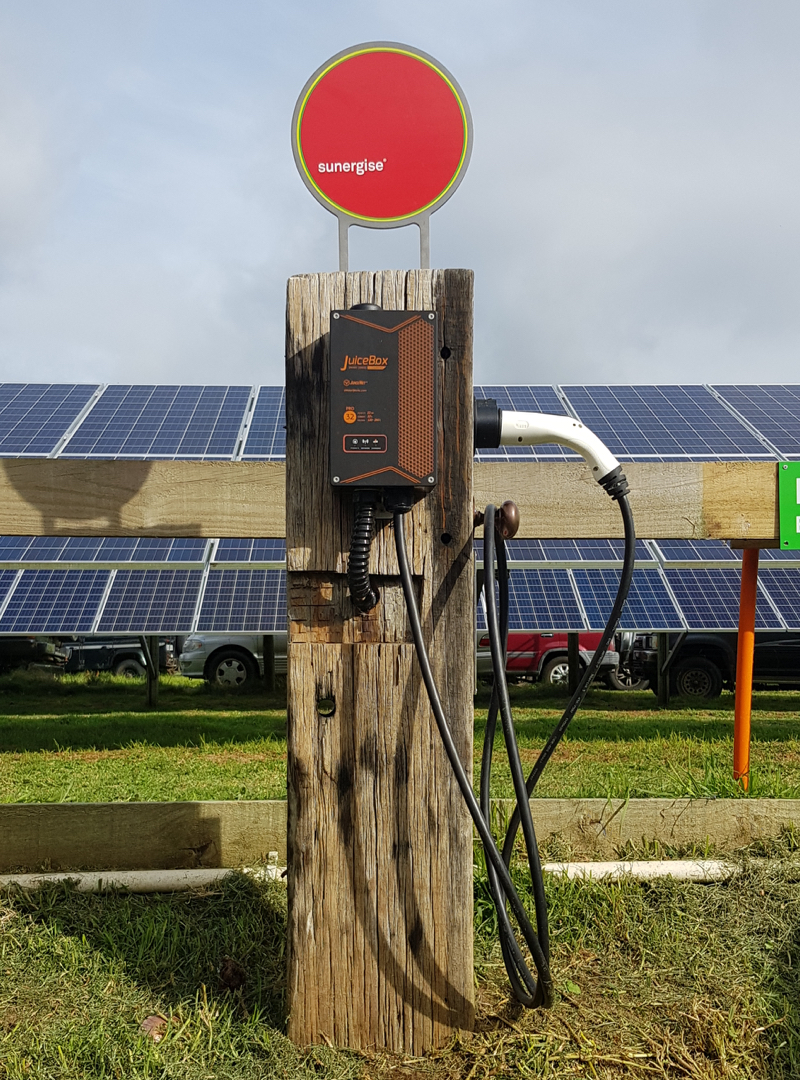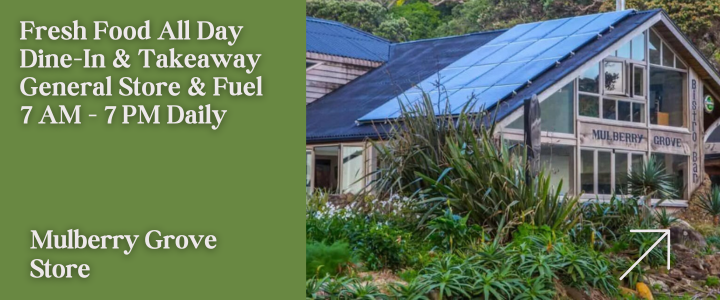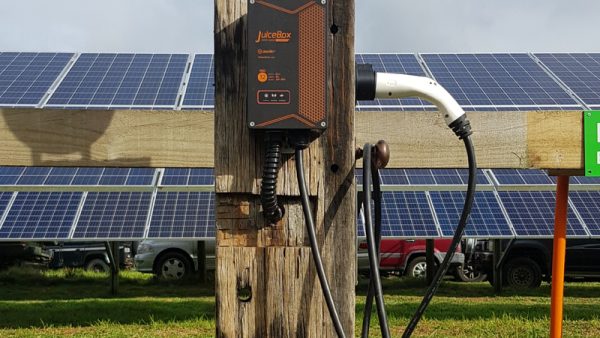In the wake of petrol prices on the Barrier soaring to a record $4.15 per litre, the highest in the country, the community faces the age-old question about alternative transport solutions. The high cost of petrol, exacerbated by the logistical and (if you buy into that) environmental costs of shipping petrol on the barge, presents a compelling case for adopting electric vehicles (EVs). So, we decided to ask the question: Can that even be done, and crucially, what does it cost to set up home charging infrastructure for an EV on an off-grid motu like ours? The short answer is yes, it can be done. The how-much question? Well, that’s a little more complex.
Choosing The EV – AKA, the EV You Can Afford
While the allure of high-end EVs like Teslas is undeniable, their steep starting price of around $70,000 makes them an impractical choice for most of us, so we went a little more down market. Enter the Nissan Leaf, a relatively affordable alternative at approximately $10,000. Its availability on the mainland and cost-effectiveness makes it an attractive proposition for those looking to make the shift to electric. Steep inclines and gravel on your way home though? You might need to look a little higher end. But let’s go with it for argument’s sake.
Driving Calculations and Sustainable Considerations
For the purposes of this experiment, we’re going with an estimation of traveling 180 kilometers a week. This is based on daily commutes between Tryphena and Claris, along with twice-weekly trips the length of the island from Port Fitzroy to Tryphena.
Calculating Solar Panel Requirements for EV Charging
To understand the feasibility of sustaining an EV like the Leaf on home solar power, let’s break down the numbers. Assuming a weekly travel distance of 180 kilometers — we can calculate the energy requirements and corresponding solar panel needs. The Nissan Leaf has an efficiency of about 6.5 km per kWh.
Basically 27.7 kWh of electricity would be required to meet the Leaf’s weekly charge requirements. Based on the island’s average solar irradiance and considering an average of 4.5 effective sunlight hours per day, it would require roughly 3 solar panels (of 300W each) to generate this amount of electricity in a week, assuming optimal conditions and no energy loss.
For winter conditions, with reduced sunlight hours to an average of 3 hours per day, approximately 4.4 solar panels (rounding up to 5 for practical purposes) are required to meet the weekly energy needs of the Leaf on Aotea.
Setup Costs
The cost for the additional solar panels factoring in $500 NZD per panel plus a $1000 NZD installation fee, totals approximately $3198 NZD. Funnily enough, the annual cost of fuel for a petrol car would amount to around $59.76 a week to fuel the 180 kilometers per week drive. That amounts to $3,107.52, almost exactly the same as the solar setup.
Let’s expand the charge to include the $10,000 cost for a Nissan Leaf, the total initial investment (solar setup plus vehicle purchase) amounts to $13,500. With the annual petrol cost being approximately $3,107.52, the adjusted payback period is roughly 4.34 years.
The Daytime Charge Factor
Okay, so this is all sounding great, sans one crucial, practical challenge: charging. Nighttime charging at home, given our solar reliance, would require a significant investment in battery storage to bank up the necessary solar charge during the day —around $30,000, a cost that’s simply too high for most.
For now, tackling this requires practical workarounds and maybe even community-driven solutions. Carpooling, for example, allows for efficient use of a charged vehicle while another charges during the day. Local businesses and critically council could have a role to play too; expanding public charging infrastructure at places like Claris Centre, and into Tryphena, Okiwi, and Port Fitzroy, would pretty much be essential.
What if I financed the Leaf and solar kit?
We made a pretty OTT assumption earlier that people could buy a Leaf outright. That’s just not the case for most. So let’s consider how things would work if you financed a Leaf.
Current car loans are sitting at around 10% interest rates.
Financing the entire cost of transitioning to an EV, which includes both the Nissan Leaf purchase and the solar infrastructure ($13,500), at a 10% interest rate over 5 years results in an annual repayment of $2,970. This analysis demonstrates that even with financing the entire transition cost, the investment still looks cost-effective.
A Good Bet
The transition to electric vehicles, supported by solar power, presents a compelling proposition for the motu. It offers a way to combat the high costs of gasoline, reduce dependency on imported fuels, and embrace a cleaner, more sustainable future. However, realizing this vision will require community engagement, supportive policies, and creative solutions to the challenges of charging infrastructure and the upfront costs of solar and EV technology.
While the central government’s introduction of road user charges may dampen support for EVs nationally, our reliance on renewable energy and aversion to high gas prices could pave the way for a model that inspires others from Aotearoa and perhaps even further afield.










